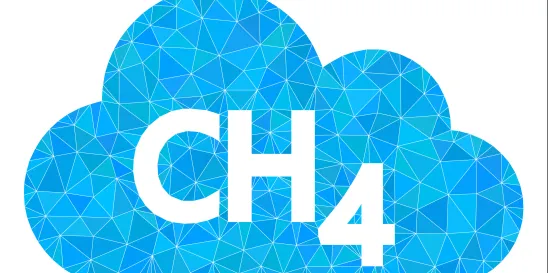On January 12, 2024, the Environmental Protection Agency (“EPA”) proposed a rule to implement the methane Waste Emissions Charge (“WEC”) program, which was enacted by Congress under the Inflation Reduction Act (“IRA”). Comments on the proposal are due 45 days after publication of the proposed rule in the Federal Register.
Among other things, the proposed rule outlines the EPA’s interpretation of how the WEC should interact with the agency’s recently finalized methane emission standards for the oil and gas sector under section 111 of the Clean Air Act (the “Section 111” regulations). Under the agency’s proposed interpretation, the WEC could be in effect for multiple years until it is supplanted by the Section 111 regulations.
Background
The IRA amended the Clean Air Act to establish the WEC, which applies to certain categories of oil and gas sector facilities that emit methane above statutorily specified thresholds. The WEC provisions are codified in section 136 of the Clean Air Act.
Under the new section 136, the facilities potentially liable for the WEC include facilities that: (1) are subject to greenhouse gas emissions reporting requirements under Subpart W of the EPA’s Greenhouse Gas Reporting Program regulations; and (2) emit more than 25,000 metric tons carbon dioxide equivalent (“mtCO2e”) for the year.
For these WEC “applicable facilities,” section 136 imposes methane emissions thresholds specific to the type of function that the facility fulfills in the gas supply chain. For example, for facilities in Subpart W’s production segment, the emissions threshold is 0.20 percent of gas sent from the facility to sale. For facilities in Subpart W’s transmission pipeline segment, the emissions threshold is 0.11 percent of gas sent to sale.
A WEC applicable facility that reports methane emissions above the threshold for its segment is liable for the charge on each ton of excess emissions. For 2024 emissions, the charge is $900/ton. For 2025, the charge is $1,200/ton. The charge for 2026 and each year thereafter is $1,500/ton. Any charges paid go to the U.S. Treasury, not the EPA.
Section 136 provides that applicable facilities under “common ownership or control” may “net” their emissions. In other words, an owner of multiple facilities may reduce its total obligation by offsetting lower-emitting facilities against higher-emitting facilities.
Congress also provided certain exemptions in section 136. One exemption is for production facilities that have higher emissions due to “unreasonable” permitting delays for gathering or transmission infrastructure for offtake. Another exemption is for wells that are shut in and plugged.
Section 136 also exempts an applicable facility from the WEC if it is in compliance with the EPA’s Section 111 regulations. However, Congress imposed two conditions on this exemption. First, the Section 111 regulations must be “approved and . . . in effect in all States with respect to the applicable facilities.” Second, the final Section 111 regulations must be no less stringent than the version of those standards proposed by EPA in November 2021.
The EPA’s Proposed Rule
The EPA’s proposed rule starts with the language of section 136 and makes several interpretive choices. For example:
- WEC Applicable Facility Emissions. If an oil or gas facility has equipment in multiple Subpart W segments, the EPA is proposing that its reportable emissions for WEC purposes are its total emissions; in other words, the facility cannot select a segment and only report emissions attributable to equipment in that segment.
- Netting. For purposes of netting, the agency is proposing that “common ownership or control” should be based on the specific owner of each facility even if the facility owner is a business unit within a larger parent company. The EPA further proposes that only WEC “applicable facilities” may participate in netting. Under this interpretation, an owner may not use an oil and gas facility with emissions at or below 25,000 mtCO2e to offset higher emissions from its WEC applicable facilities. Facilities that qualify for exemptions also are precluded from netting.
- Exemption for Unreasonable Permitting Delays. The EPA is also proposing specific criteria for the exemption for unreasonable permitting delays. For example, the exemption would be available only for production facilities and only for methane that would have been captured if the infrastructure had been permitted and built. In addition, the agency is soliciting comments on a timeframe for unreasonable delay that is between 30 and 42 months from submission of a complete permit application.
The proposed WEC rule also addresses the so-called “regulatory exemption.” As noted above, the exemption is only available if the EPA’s Section 111 regulations “have been approved and are in effect” in all states that have WEC applicable facilities. This is a meaningful limitation because the section 111 standards reach existing oil and gas facilities through a multi-year federal-state process in which each state must submit a plan to the EPA for regulating its facilities; the EPA then must approve the state plan or impose a “federal” plan. The EPA proposes that the Section 111 exemption is not available until all states that have WEC applicable facilities have Section 111 compliance plans in effect. This interpretation has significant timing impacts. In its Regulatory Impact Analysis for the proposed WEC implementation rule, the agency predicts that the state Section 111 plans will not be in effect until sometime in 2027, which means that the WEC will apply for 2024 through at least part of 2027.
Finally, under EPA’s interpretation, a WEC applicable facility may qualify for the Section 111 regulatory exemption only if all components and equipment at the facility are in compliance with relevant Section 111 standards.
Interactions with Other Federal Policies
The proposed WEC rule interacts with other federal methane policies besides the Section 111 regulations. For example, the calculation of methane emissions for purposes of WEC liability is entirely determined through the Subpart W emissions reporting regulations. The EPA recently proposed modifications to the Subpart W regulations. These modifications are notable for its extensive use of updated “emission factors,” which are categorical estimates of emissions. Also noteworthy is the relative absence of provisions allowing the use of advanced methane measurement technologies—even though such technologies are an important compliance option in the EPA’s Section 111 regulations.
Another related policy is the $1.55 billion that Congress appropriated under the IRA to help finance the early adoption of methane mitigation and monitoring technologies. The EPA has referred to the WEC, the Subpart W regulations, and these appropriated funds as a collective “Methane Emission Reduction Program.”
The EPA is not the only federal agency implementing methane policies. The Bureau of Land Management has proposed regulations addressing flaring and venting at production wells on federal lands. The Pipeline and Hazardous Materials Safety Administration is working on rules that target methane leakage from gathering and transmission pipelines under its jurisdiction. Finally, the Department of Energy is participating in a multilateral working group to establish an agreed international framework for monitoring, measurement, and verification of methane emissions.




 />i
/>i

